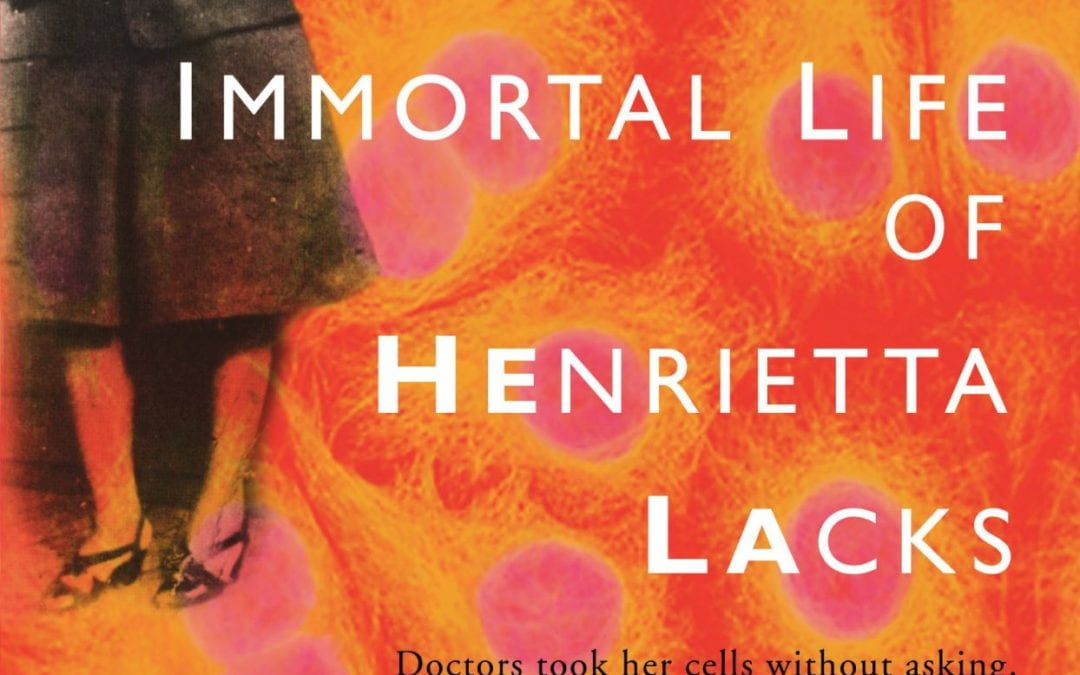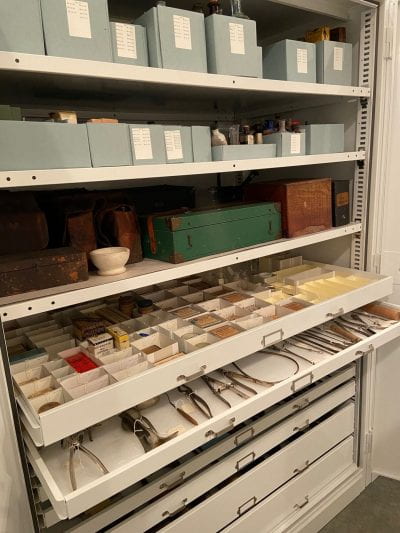August 2020 Museum Reads pick –
The Immortal Life of Henrietta Lacks by Rebecca Skloot
Learn more about this new feature here. Post by Curator of Education & Engagement, Laurel Lamb.
Her name was Henrietta Lacks, but scientists know her as HeLa. She was a poor black tobacco farmer whose cells – taken without her knowledge in 1951 – became one of the most important tools in medicine, vital for developing the polio vaccine, cloning, gene mapping, and more. Henrietta’s cells have been bought and sold by the billions, yet she remains virtually unknown, and her family can’t afford health insurance. This phenomenal New York Times bestseller tells a riveting story of the collision between ethics, race, and medicine; of scientific discovery and faith healing; and of a daughter consumed with questions about the mother she never knew. [Official Back Cover Summary]
Why this book?
The Museum’s historical medical equipment and early to mid-20th century pharmaceuticals collection inspired me to pick up this book. Similar in nature to the far reaching, varied contributions of HeLa cells, the Museum’s medical collection covers a wide variety of objects: medicine containers, doctor’s bags, vaccine kits, gynecological equipment, surgical kits, and more.
Last December the medical collection was utilized in the collaborative art installation Chill Tonic: Special Topics in Artistory*. School of Art M.F.A. student Elizabeth Alspach approached the Museum about the idea, and I was happy to be involved. It was a unique experience for both of us coming from two different disciplines — art and history.
Thoughts on the Skloot’s Book
The cells of Henrietta Lacks have touched so many aspects of science and medicine, from development of the polio vaccine to our understanding of cancer. Here’s a timeline of HeLa research contributions from the National Institutes of Health. Yet, Henrietta didn’t live to see these achievements. She died of cervical cancer on October 4, 1951. She was 31-years-old.
Rebecca Skloot’s book covers two main avenues – HeLa cells and Henrietta herself.
The author does well explaining scientific terminology and processes understandable to all, not just experts in the field. This struck me as important considering her family faced confusion, distrust and pain over the years because of a lack of clear, informed explanation of Henrietta’s cells from the medical community.
The focus on Henrietta and her family was what I really enjoyed about the book though. After being left out of the narrative for so long, to hear their side of the story was significant. Readers follow Skloots on her journey to learn about Henrietta through many interviews with her family and friends. I recently learned another book, Henrietta Lacks: The Untold Story, was published earlier this year. Ron Lacks, Henrietta’s grandson, is the author. After reading Skloot’s account, I’m anxious to delve further into her story from her family’s direct perspective.


